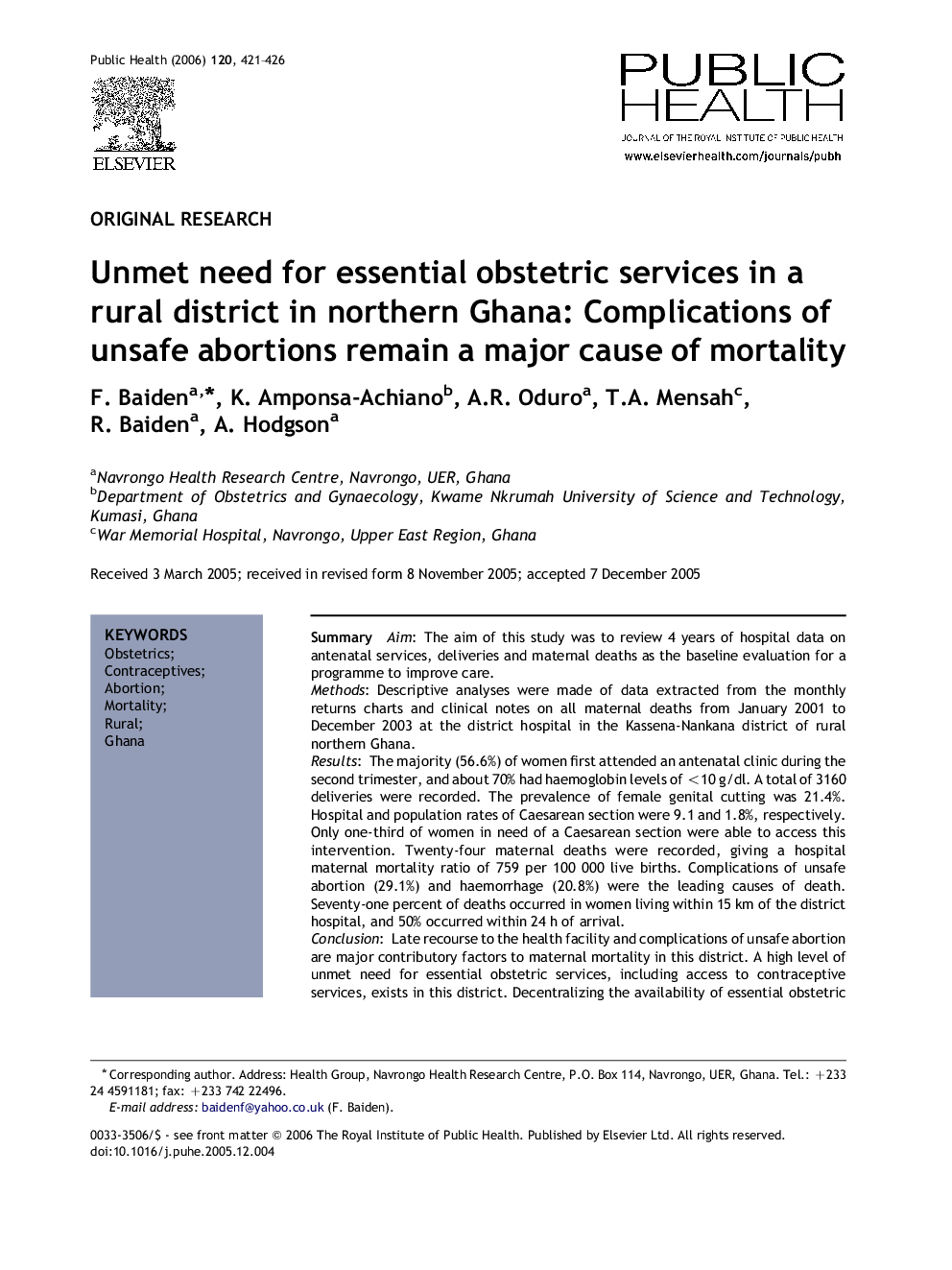| Article ID | Journal | Published Year | Pages | File Type |
|---|---|---|---|---|
| 1088980 | Public Health | 2006 | 6 Pages |
SummaryAimThe aim of this study was to review 4 years of hospital data on antenatal services, deliveries and maternal deaths as the baseline evaluation for a programme to improve care.MethodsDescriptive analyses were made of data extracted from the monthly returns charts and clinical notes on all maternal deaths from January 2001 to December 2003 at the district hospital in the Kassena-Nankana district of rural northern Ghana.ResultsThe majority (56.6%) of women first attended an antenatal clinic during the second trimester, and about 70% had haemoglobin levels of <10 g/dl. A total of 3160 deliveries were recorded. The prevalence of female genital cutting was 21.4%. Hospital and population rates of Caesarean section were 9.1 and 1.8%, respectively. Only one-third of women in need of a Caesarean section were able to access this intervention. Twenty-four maternal deaths were recorded, giving a hospital maternal mortality ratio of 759 per 100 000 live births. Complications of unsafe abortion (29.1%) and haemorrhage (20.8%) were the leading causes of death. Seventy-one percent of deaths occurred in women living within 15 km of the district hospital, and 50% occurred within 24 h of arrival.ConclusionLate recourse to the health facility and complications of unsafe abortion are major contributory factors to maternal mortality in this district. A high level of unmet need for essential obstetric services, including access to contraceptive services, exists in this district. Decentralizing the availability of essential obstetric services through health centres to community level is necessary to reduce maternal mortality in developing countries.
